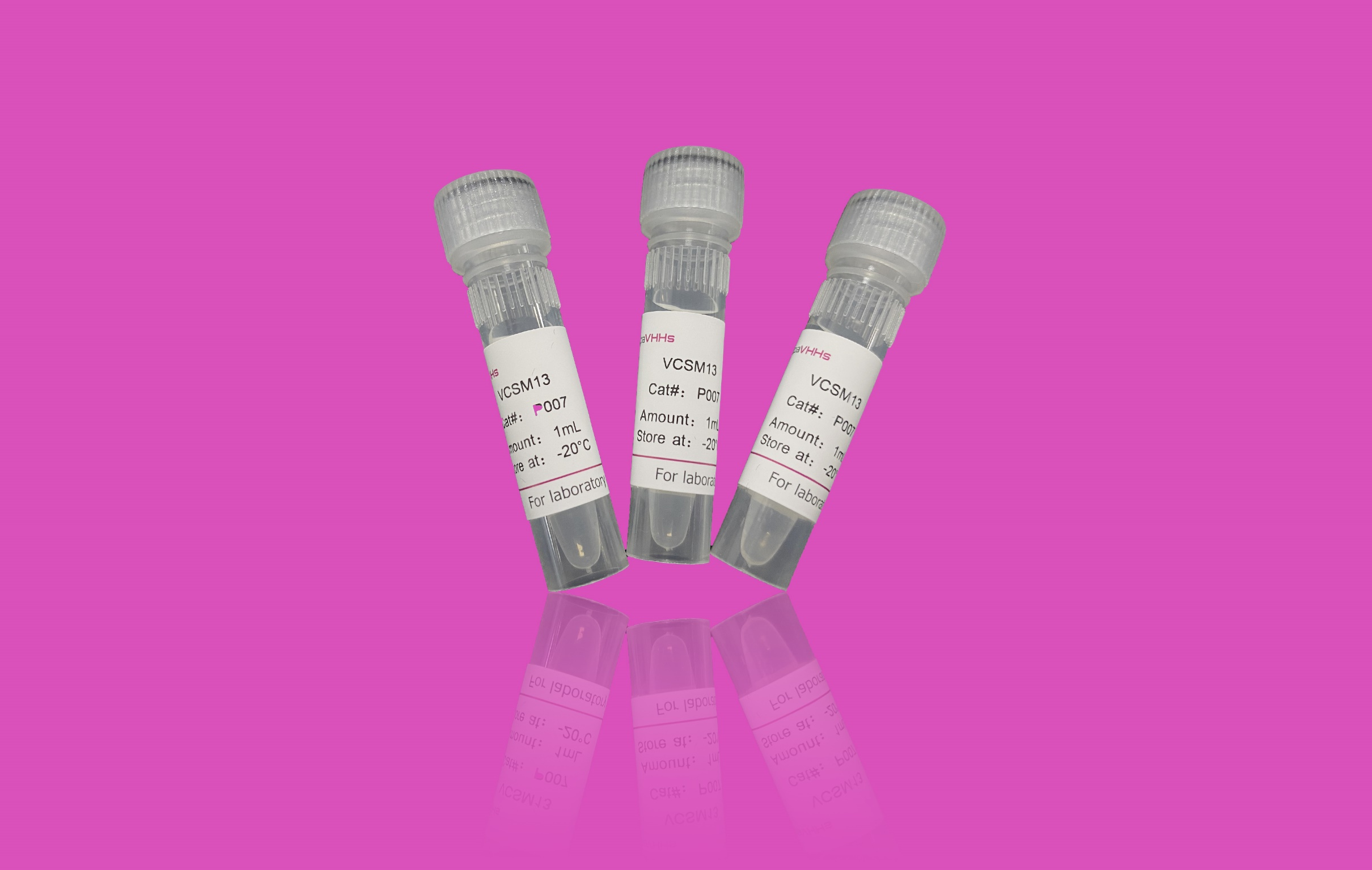VCSM13 is a derivative of M13KO7 originally commercialized by Stratagene and often used in phagedisplay; the phenotype of VCSM13 has never been published and exact sequence is unclear.To propagate (amplify) the VCSM13 helper phage requires using the E. coli TG1,ER2738 or strainXL1-Blue MRF′ ,because those strain harbors the supE44 mutation, which provides a glutamine suppressor tRNA.The VCSM13 helper phage is used strictly to produce single stranded DNA from the already excised phagemid. (This is also what M13K07 is used for.)
Storing the Helper Phage
Recommends storing them at -80℃ with 50% Glycerol. As long as there is a -80℃ stock in the lab, the amplified lab prep can be stored at+4℃.
Titering the Helper Phage
1. Streak out TG1 onto an 2YT plate. Pick a single colony of TG1, inoculate into 2YT and grow to OD600 = 0.6. Meanwhile prepare a serial dilution of the phage in PBS buffer. Expected number of phage should be about 1010pfu/ml; therefore dilute phage to create dilutions 10-4 to 10-7.
Note:
When preparing serial dilutions of bacteriophage, it is usually much more accurate to dilute 10μl into 100 to create a 10-1 dilution or 10μl into 1000μl to create a 10-2 dilution rather than to dilute 1 into 10μl or 1μl into 100μl because one tends to obtain grossly exaggerated titers resulting from small pipetting errors. This is particularly critical for the first dilution.
2.Add 200μl of TG1 cells at OD600 = 0.6 to individual sterile culture tubes (the number of phage dilutions you plan to plate) in a test tube rack.
3.Add 100μl of each serial dilution of helper phage to the culture tubes containing the TG1 cells.
4. Place the test tube rack into a 37℃ water bath for 15 minutes to allow the helper phage to attach to the cells.
5. Meanwhile melt NZY Top Agarose in the microwave and allow it to cool to ~48/50℃.
You need to pay close attention to the bottle containing the top agarose because it can quickly boil over; alternatively use a low power setting on the microwave.
6. At the conclusion of the 15-minute incubation, add ~3 ml of the NZY top agarose to the test tube containing the helper phage & E.coli. Remove the tube from the rack (which is still sitting in the water bath) and give it a quick flick of your wrist mixing the contents and immediately pour it onto an NZY plate. (I usually do three plates at one by pipetting 10 ml of the NZY top agarose from the bottle, dispensing ~3.3 to one tube, ~3.3 to second tube and then another ~3.3 to a third tube. I then pour the plates starting with the first tube I put the NZY into.)
7. Allow the top agarose to cool (~5 minutes).
8. Invert the plate and incubate overnight at 37℃.
9. Count the number of plaques.
Amplifying the Helper Phage
1. Streak out TG1 onto an 2YT plate.
2. Pick a single colony of TG1 and inoculate into 5ml 2×YT and grow until OD600 = 0.3 (~2.5×108 cells/ml).
3. Add helper phage at a multiplicity of infection (MOI) of 20:1 (phage-to-cells ratio). Do this for both VCSM13.
Note: (If amplifying VCSM13 helper phage, add kanamycin to a final concentration of 25μg/ml to the medium 30 minutes after the helper phage and cells have been allowed to grow together.)
4. Grow the culture at 37℃ with vigorous aeration (~300rpm) for 8 hours.
5. Heat the culture to 65℃ for 15 minutes.
6. Spin down the cell debris and transfer the supernatant to a fresh tube.
7. Titer the helper phage produced.
VECTOR MAP




